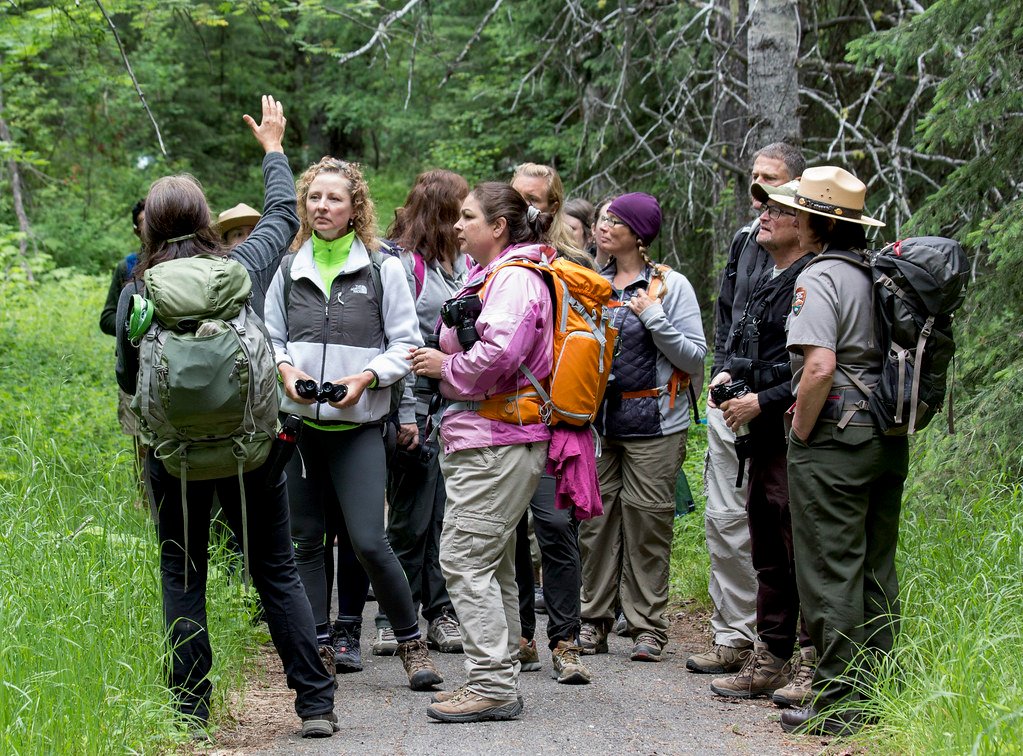the Night Safari Became a Nocturnal Sanctuary Success
There’s something almost magical about walking through a darkened forest pathway, listening to the distant calls of creatures that most of us never get to see in their element. Imagine a place where the night comes alive with the natural behaviors of animals that have spent millions of years perfecting their after-dark existence. This isn’t some fantasy realm – it’s the revolutionary concept that transformed Singapore’s Night Safari from a wild idea into one of the world’s most celebrated wildlife sanctuaries.
The Revolutionary Moment That Changed Everything

Picture this: it’s the 1980s, and zoo visitors around the world are used to seeing lethargic big cats sleeping through the day and nocturnal mammals huddled in dark corners. Dr. Ong Swee Law, the former executive chairman of Singapore Zoo, had a eureka moment that would flip the entire zoo industry on its head. The problem was glaringly obvious – conventional zoos had long struggled to exhibit tropical mammals that were largely nocturnal by nature. Why not create an entire zoo that operated exclusively at night, when these amazing creatures were naturally active and engaging? Sri Lankan zoo consultant Lyn de Alwis conceived the detailed idea of a night safari, which the zoo management agreed to, favoring this option as they were determined to embark on something markedly different. The popularity of experimental night tours of the Singapore Zoo in the late 1980s had further assured them of the potential of a night visitor market. This wasn’t just thinking outside the box – this was throwing the box away entirely and creating something the world had never seen before.
Seven Years of Daring Innovation

Seven Years of Daring Innovation (image credits: unsplash)
From conception to construction, the Night Safari took seven years to complete at a cost of S$62.5 million, officially opening on 26 May 1994 and occupying 35 hectares of secondary rainforest. Pioneering the world’s first night zoo proved a challenging feat as there was no existing model for the management team to learn from. Think about that for a moment – they were literally writing the playbook as they went along. As a marketing strategy, the nocturnal zoo was initially named the Asian Night Safari with a focus on Asian species but was later renamed the Night Safari to expand the range of species that could be exhibited. The team had to solve countless unprecedented problems, from animal welfare concerns to visitor safety in darkness. In approaching the Night Safari, the only available lighting model consisted of the practice in many game reserves and national parks of floodlighting a waterhole, or spotlighting animals from a vehicle at night.
The Lighting Challenge That Nearly Broke the Dream

Lighting proved to be the most challenging issue as sufficient illumination had to be provided for visitors to observe the animals without upsetting their natural behaviors. London based lighting designer Simon Corder created the lighting for Night Safari. This wasn’t just about installing some floodlights and calling it a day – it required revolutionary thinking about how light affects animal behavior. The animals of the Night Safari are made visible by lighting that resembles moonlight, which although brighter than full moonlight by a few orders of magnitude, is dim enough not to disturb nocturnal and crepuscular animals’ behaviour. The term ‘habitat lighting’ was coined during the conceptual development of the Night Safari, and its unique feature is the manner of presentation of nocturnal animals which is primarily manifested as novel lighting design. Every single light had to be carefully positioned and calibrated to create an environment where both animals and humans could coexist comfortably in the darkness.
A Natural Paradise in the Heart of Singapore

Unlike traditional nocturnal houses, which reverse the day-night cycle of animals so they will be active by day, the Night Safari is an entire open-air zoo set in a humid tropical forest that is only open at night between 7pm and 12mn. The naturalistic enclosures simulate the animals’ native habitat, with animals separated from visitors by natural barriers rather than cages, similar to the Singapore Zoo’s open concept. This wasn’t just about creating a zoo that operated at night – it was about crafting an authentic wilderness experience within an urban environment. It is divided into six geographical zones, which can be explored either on foot via four walking trails, or by tram. Visitors could choose their own adventure, whether that meant a leisurely tram ride through multiple habitats or an up-close walking experience through carefully designed trails. As night falls, visitors can explore 4 walking trails and ride the Safari Adventure Tram to meet over 900 nocturnal creatures, from free-roaming Malayan tapirs to majestic lions.
The Incredible Diversity That Calls Night Safari Home

The safari hosts over 900 animals in naturalistic, dimly-lit enclosures that mimic nighttime conditions, divided into several geographical zones like the Himalayan Foothills and Equatorial Africa. Visitors get to see a variety of species including lions, leopards, Malaysian tapirs, hippos, tigers, hyenas, otters, bears and more. But this isn’t just a random collection of animals – each species was carefully selected based on their nocturnal behaviors and ability to thrive in this unique environment. Chawang the Indian Elephant, found in Malaysia in his youth, is the animal icon of the night safari and the largest resident in Singapore’s wildlife parks. The diversity spans continents and ecosystems, creating a global representation of nighttime wildlife. Visitors can explore the safari’s four zones: Leopard Trail, Wallaby Trail, Fishing Cat Trail, and East Lodge Trail, to see the diverse animals in a range of environments. Each zone offers a completely different experience, from the Australian outback to Asian jungles.
Breaking Conservation Barriers Through Successful Breeding

Significantly, the births of the Sunda pangolin and the red giant flying squirrel were believed to be the first in captivity and Asia’s first in captivity respectively. Over the past few years, they have successfully bred Malayan tigers, Asian elephants, fishing cats, red dholes, clouded leopards, anoas, markhors, bantengs, Malayan tapirs and Asian lions. These weren’t just happy accidents – they represented groundbreaking achievements in captive breeding that other zoos around the world struggled to accomplish. In February 2008, the Night Safari successfully bred its 26th tapir, a noteworthy achievement given the vulnerability of the species. Most encouraging of all, it has successfully bred a number of endangered species, including Malayan tigers, Asian elephants, fishing cats, Malayan tapirs and Asian lions. The success of these breeding programs demonstrated that the Night Safari’s approach wasn’t just about entertainment – it was making real contributions to global conservation efforts. They actively promote biodiversity through their breeding programme of threatened species.
The Medical Revolution Behind the Scenes

In March 2006, a S$3.6-million veterinary facility, The Wildlife Healthcare and Research Centre, was unveiled to better treat and care for the night zoo’s animals. This represented a quantum leap in veterinary care for nocturnal animals, addressing the unique medical challenges that come with caring for creatures that are active when most veterinary practices are closed. The facility became a model for other zoos worldwide, demonstrating how specialized medical care could be integrated into conservation efforts. The investment showed Singapore’s commitment to not just displaying animals, but ensuring their long-term health and wellbeing. This wasn’t just about fixing problems when they arose – it was about proactive healthcare that could prevent issues before they became serious. The center became a hub for research into nocturnal animal medicine, contributing valuable knowledge to the global zoo community.
Recognition That Speaks Volumes

The Night Safari is the world’s first nocturnal wildlife park and 13-time Best Attraction Experience winner in Singapore. The Night Safari is renowned among the international zoo community and has drawn delegations from the San Diego Zoo and Disneyland’s Animal Kingdom theme park looking to emulate its successful concept. In its illustrious 20-year history, the night zoo has bagged the Singapore Tourism Board’s Best Visitor Attraction Award 11 times. These weren’t participation trophies – they were hard-earned recognition from peers who understood just how difficult it was to create something truly innovative in the zoo world. The park has received numerous awards including the Singapore Totalisator Board Excellence For Singapore Award (1996) for its unique ‘open zoo’ design and excellent in-situ conservation achievement. Some of the very prestigious awards include STB Singapore Experience Awards: Best Visitor Attraction Experience, ASEAN Tourism Association – Aseanta Awards for Excellence, Best Leisure Attraction Experience. The international recognition validated that Singapore had created something truly special that other countries wanted to replicate.
The Tram Experience That Changed Everything

Visitors can explore the park via a 40-minute tram ride with live commentary or venture on foot through trails for closer encounters. A large part of the park is designed to bring visitors on a 30-minute tram ride through habitats ranging from the Himalayan foothills to the jungles of Southeast Asia, with commentary during the tram experience to educate visitors on the importance of wildlife conservation. This wasn’t just transportation – it was a carefully orchestrated journey through different ecosystems and continents. Throughout the ride, visitors travel through 6 geographical regions from the Himalayan foothills to the jungles of Southeast Asia, made even more entertaining by engaging and live commentary. The tram became an educational platform where conservation messages could be delivered naturally as visitors encountered different species. Visitors can explore the park in the comfort of trams, complete with audio commentary in English on animals and zones. The experience was designed to be both comfortable and informative, making conservation education accessible to visitors of all ages and backgrounds.
Walking Trails That Bring You Face-to-Face with Wildlife

Opening in 2012, the Wallaby Trail features a walkthrough habitat and smaller enclosures for other nocturnal Australian animals, including a large man-made cave called the Naracoorte Cave, a reconstruction of the Naracoorte Caves National Park, which has several indigenous paintings and holds invertebrates and reptiles. Four female Tasmanian devils arrived from the Trowunna Wildlife Sanctuary in November 2022, part of an insurance population managed by the Save the Tasmanian Devil Programme. The walking trails offered a completely different experience from the tram ride – they allowed for intimate encounters and longer observation periods. Each trail was designed around specific themes and ecosystems, creating immersive experiences that transported visitors to different parts of the world. One can either take a tram or go on a walking trail along any one of its 4 routes, with a tram ride taking around 40 minutes while a stroll will easily take up to 3 hours. The trails became popular with photographers and wildlife enthusiasts who wanted more time to observe animal behaviors. It is not only well-lit, convenient and safe but is also a mesmerising experience for each visitor.
The Entertainment Factor That Educates

The Creatures of the Night presentation is a popular highlight at Night Safari, highlighting animal conservation and sustainability efforts. One of the main highlights of the Night Safari is the highly popular Creatures of the Night Presentation, which has three shows – 7.30pm, 8.30pm and 9.30pm. This wasn’t just entertainment for entertainment’s sake – it was carefully crafted to deliver conservation messages through engaging animal demonstrations. Visitors can expect spectacular performances from nocturnal creatures and wildlife ambassadors such as the Asian small-clawed otters and fennec fox. Highlights include the Malayan tiger, Asian elephants, and the nightly Creatures of the Night show. The show became a platform for educating visitors about the unique adaptations and behaviors of nocturnal animals. The combination of education and entertainment proved to be incredibly effective in creating lasting memories and inspiring conservation action among visitors.
A Tourism Phenomenon That Put Singapore on the Map

The Night Safari has become a leading icon of Singapore tourism, attracting more than 1.1 million visitors yearly. As dusk falls, over 1000 nocturnal animals begin their night rituals which makes it an astounding experience for the spectators, and this is one big reason why the park has been frequently awarded for Family Experience and Visitor Attraction Experience Awards. The numbers tell an incredible story of success – from a risky experiment to a must-see destination that draws visitors from around the globe. As the world’s first nocturnal wildlife park, it offers a rare chance to observe animals during their most active hours. The Night Safari became more than just an attraction – it became a symbol of Singapore’s innovation and commitment to wildlife conservation. The ambience is peaceful, even mysterious, adding to the thrill, and it’s suitable for families, couples, and solo travelers looking for something different. The success helped establish Singapore as a leader in innovative tourism experiences and sustainable wildlife management.
Environmental Leadership in Action

One of the biggest environmental enemies is plastic and at this Nocturnal Park’s exclusive environmental stand has helped in significantly reducing the use of one-time-use plastic, with initiatives including reducing bottled water campaign and plastic bag waste, going green at the F&B outlets. The Night Safari didn’t just talk about conservation – it walked the walk by implementing real environmental initiatives that made a measurable difference. These efforts demonstrated that entertainment venues could be both profitable and environmentally responsible. The plastic reduction initiatives became a model for other attractions worldwide, showing how small changes could have big impacts. It is also a member of the Southeast Asian Zoo and Aquarium Association (SEAZA) and the World Association of Zoos and Aquariums (WAZA). The environmental leadership extended to energy conservation, waste management, and sustainable sourcing practices that set new standards for the industry.
The Science Behind Nocturnal Animal Care

Being subjected to daylight conditions without reversing their light cycle and provide adequate night lighting impacts the health of nocturnal primates and neglects their behavioural needs. Nocturnal animals in zoos are generally housed on reversed light cycles and are illuminated by blue or red artificial light so that daytime visitors can observe their active behaviors, however previous research suggests that exposure to light all 24 h of the day and exposure to blue light during the dark phase can be harmful to human and animal health. The Night Safari’s approach was revolutionary because it respected the natural rhythms of nocturnal animals rather than forcing them to adapt to human schedules. All study animals performed fewer active behaviors in exhibits with blue light compared to red, and under blue light, concentrations of salivary melatonin decreased significantly in an aye-aye. This scientific understanding became crucial to the success of the venture, as it ensured that animal welfare was never compromised for visitor entertainment. Each species requires the correct wavelength, intensity, and schedule of light to meet their different physiological and behavioral needs. The research conducted at Night Safari contributed valuable knowledge to the global understanding of nocturnal animal care.
Educational Impact That Ripples Around the World

Captive breeding is an important tool used in modern education of conservation issues because it provides a framework for how we care about species and allows institutions to show the beauty that is contained in our natural environment. These institutions should also aid in the preservation of biodiversity by providing public education, professional training, research, and support for in situ conservation activities. The Night Safari became more than just a tourist attraction – it became a powerful educational platform that changed.




